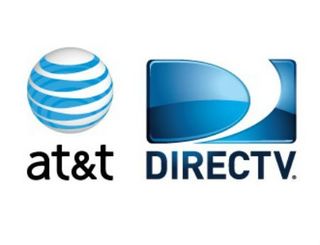AT&T Bundles Broadband Commitments Into DirecTV Deal

With its proposed $48.5 billion acquisition of DirecTV, AT&T is already looking to win favor with regulators by weaving in an array of broadband-related commitments, including adherence to the original, but now mostly-vacated, FCC Open Internet rules.
AT&T said would commit to expand its plans to build and “enhance” high-speed broadband service to an additional 15 million customer locations, primarily in rural areas where it does not provide broadband service today, via a technology mix that includes fiber-the-premises and fixed wireless connections, with the latter likely coming in the form of AT&T's growing Long Term Evolution network.
AT&T said this part of the agreement, to be completed within four years after sealing up the DirecTV deal, is on top of its current fiber and Project VIP broadband expansion plans. Project VIP is the telco’s ongoing three-year capex investment that covers its LTE deployment and the expansion of its U-verse footprint by an additional 8.5 million customer locations, as well as U-verse speed upgrades. The current plan is to complete AT&T's LTE network build by this summer, expanding on its current LTE footprint that covers more than 280 million POPs. On the wireline IP network side, the current Project VIP commitment is to reach 57 million customer locations by the end of 2015, or about 75% of customer locations in AT&T's 22-state wireline service area. In that same service area, AT&T also plans to expand its fiber network to reach an additional 1 million business customer locations, also by the end of 2015. Speaking at an investor conference in March, AT&T CEO Randall Stephenson labeled 2014 as a “peak year” for Project VIP.
On the fiber end, AT&T has announced that it is in talks to expand the reach of its 1-Gbps-capable “U-verse with GigaPower” platform to at least 21 new major metros. AT&T has already begun to roll out GigaPower to parts of Austin, Texas, expects to start deployments in Dallas this summer, and is in “advanced discussions” with the North Carolina Next Generation Network to bring the fiber-fed platform to six cities in North Carolina, including Raleigh-Durham and Winston-Salem.
Giving a nod to the popularity of over-the-top video, AT&T said the proposed entity is also prepared to offer a stand-alone wireline broadband service offering speeds of at least 6 Mbps, “where feasible,” in areas where AT&T offers wireline IP broadband services today at guaranteed prices for three years after closing. AT&T didn’t specifically use the term “cord-cutters,” but it did note that such a service is for customers who want only a broadband service and “may choose to consume video through an over-the-top…service like Netflix or Hulu.”
The telco added that the combo with DirecTV will put it in better position to “develop unique contnet offerings for consumers” through initiatives such as AT&T's recently announced OTT video joint venture with The Chernin Group.
AT&T also committed to adhere to the now mostly-vacated FCC’s Open Internet rules originally established in 2010, for a period of three years after it successfully closes the merger with DirecTV. AT&T and DirecTV said they are making that commitment “irrespective of whether the FCC re-establishes such protections for other industry participants following the DC Circuit Court of Appeals vacating those rules" in January.
Multichannel Newsletter
The smarter way to stay on top of the multichannel video marketplace. Sign up below.
Last Thursday (May 15), the FCC, under new chairman Tom Wheeler, voted on proposed new rules that would use Section 706 authority to revive Open Internet rules.
